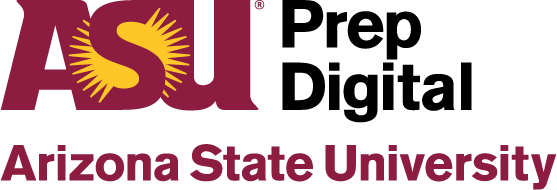Literacy is the gateway to opportunity. When students learn how to read and write at a young age, it has the potential to change the course of their lives by fast-tracking their comprehension and communication skills. But over the past few years, literacy rates have fallen among Arizona elementary school students, likely due to unscientifically proven ways of teaching language.
In the past, elementary school teachers mostly taught by association. For example, when a student reads a book and gets to a word they don’t know, they’re told to read around it or use context clues and illustrations to bridge the gaps. Today, we know there’s more merit behind phonics instruction, helping students attend to the sounds within words instead of making inferences.
As students reach third, fourth and fifth grade, they encounter more reading materials with complicated, multisyllabic content and no pictures to help them figure out the words on the page.
“It’s about taking a more systematic approach to literacy, asking students what sounds they hear when they sound out a word” said Heidi Morton, Lead Training Specialist at ASU Prep Digital. “We’re leaning further away from a visual cues system and, in turn, giving students the foundational phonics instruction they need from the get-go.”
The Science of Reading, one of ASU Prep Digital’s teacher training programs, is focused on instructing Arizona elementary school teachers how to do just that.
“We’re not born knowing how to read,” Morton added. “We have to train our brains to recognize the sound-to-symbol correspondence, and the secret lies in the science of reading.”
Developed by the Arizona Virtual Teacher Institute, The Science of Reading is customized per district or school and provides free research-based support to help Arizona teachers increase reading outcomes among their students in grades K-5. The flexible professional development program leverages ASU Prep Digital’s expert instructors to partner with a school to assess needs, examine classroom data and make recommendations to ensure teacher success going forward.
“We start by setting a baseline for the school, then help to create a tailored system to roll out the customized professional development series,” said Morton.
Subject matter is highly targeted and multi-sensory, leveraging proven techniques such as Hollis Scarborough’s Reading Rope, which details the complexities involved in learning how to read, such as language comprehension and word recognition.
Camp Reading also includes live collaborative coaching on the topic of reading instruction. Teachers meet in a small group setting to discuss what’s going on in their classroom and any specific learnings that their students are struggling with.
“ASU Prep Digital’s facilitators are so incredibly knowledgeable and helpful,” said Tonya Strozier, Principal at Holladay Fine Arts Magnet Elementary School in Tucson. “Their demeanor makes all the difference.”
Principal Lindsay Veryrees of Greenway Elementary School in Bisbee has also seen a noticeable difference since her teachers have participated in Camp Reading. “ASU Prep Digital has given us so many strategies that our teachers have implemented immediately,” she said. “And I really believe the collaborative sessions make such a difference.”
“This has been such a wonderful series,” added Jaye Harden, 3rd grade teacher at Holladay Fine Arts Magnet Elementary School in Tucson. “I’ve learned so much and can already see it catapulting my students’ literacy growth.”
If you’re interested in bringing Camp Reading to your school or district, please contact Alison Hernandez, Director of Professional Development at ASU Prep Digital, at anhernandez@asu.edu.


